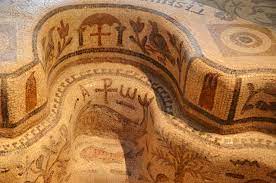In this article we discussed the cultural heritage of Tunisia which includes the culture and furthermore the heritage sites in Tunisia.
CULTURE OF TUNISIA
Tunisian culture is a product of more than three thousand years of history and an important multi-ethnic influx. Ancient Tunisia was a major civilization crossing through history; different cultures, civilizations and multiple successive dynasties contributed to the culture of the country over centuries with varying degrees of influence. Among these cultures were the Carthaginian – their native civilization, Roman (Roman Africans), Vandal, Jewish, Christian, Arab, Islamic, Turkish, and French, in addition to native Amazigh. This unique mixture of cultures made Tunisia, with its strategic geographical location in the Mediterranean, the core of several civilizations of Mare Nostrum.
Read: GOVERNORATES OF TUNISIA
What is the cultural heritage site?
Cultural heritage sites include hundreds of historic buildings and town sites, important archaeological sites, and works of monumental sculpture or painting.
List of Heritage Sites in Tunisia
This is a list of Heritage Sites in Tunisia with properties of cultural and natural heritage in Tunisia as inscribed in Heritage List or as on the country’s tentative list. As of 2017, eight sites in Tunisia are included. In addition to its inscribed sites, Tunisia also lists thirteen properties on its tentative list.
Heritage Sites
| Site | Location | Criteria | Area ha (acre) | Year | Description |
| Punic Town of Kerkuane and its Necropolis | Nabeul Governorate 36°56′47″N 11°05′57″E | Cultural: (iii) | — | 1985 | Abandoned in 250 BCE during the First Punic War and never rebuilt, Kerkuane is the only surviving example of a Phoenicio-punic settlement |
| Medina of Tunis | Tunis Governorate 36°49′00″N 10°10′00″E | Cultural: (ii)(iii)(v) | 296 (730) | 1979 | The Medina of Tunis contains some 700 monuments, including palaces, mosques, mausoleums, madrasah and fourtains, testifying to Tunis’ golden age from the 12th to the 16th century. |
| Medina of Sousse | Sousse Governorate 35°49′40″N 10°38′19″E | Cultural: (iii)(iv)(v) | 32 (79) | 1988 | A prime example of a town from the early Islamic period, Sousse was an important commercial and military port during the 9th century. |
| Kairouan | Kairouan Governorate 35°40′54″N 10°06′14″E | Cultural: (i)(ii)(iii)(v)(vi) | 68 (170) | 1988 | Founded in 670, Kairouan was the former capital of Ifriqiya and flourished in the 9th century. Its heritage includes the Mosque of Uqba and the Mosque of the Three Gates. |
| Ichkeul National Park | Bizerte Governorate 37°09′49″N 9°40′29″E | Natural: (x) | 12,600 (31,000) | 1980 | Ichkeul Lake and the surrounding wetlands is a destination for hundreds of thousands of migrating birds, including ducks, geese, storks and pink flamingos. It was once part of a chain that extended across North Africa. |
| Dougga / Thugga | Béja Governorate 36°25′25″N 9°13′13″E | Cultural: (ii)(iii) | 70 (170) | 1997 | The site features the ruins of Dougga, a former capital of a Libyan–Punic state, which flourished under the Romans and the Byzantines, but went into decline in the Islamic period. |
| Archaeological Site of Carthage | Tunis Governorate 36°51′10″N 10°19′24″E | Cultural: (ii)(iii)(vi) | 616 (1,520) | 1979 | Founded in the 9th century BCE, Carthage developed into a trading empire spanning the Mediterranean. The city was destroyed in 146 BCE in the Punic Wars at the hands of the Romans, but was later reestablished. |
| Amphitheatre of El Jem | Mahdia Governorate 35°17′47″N 10°42′25″E | Cultural: (iv)(vi) | 1.37 (3.4) | 1979 | Built during the 3rd century, the Amphitheatre of El Jem is North Africa’s largest amphitheatre, and the largest one built outside of Italy, with a capacity of 35,000 spectators, regarded as among the most accomplished examples of Roman architecture of its kind. |
